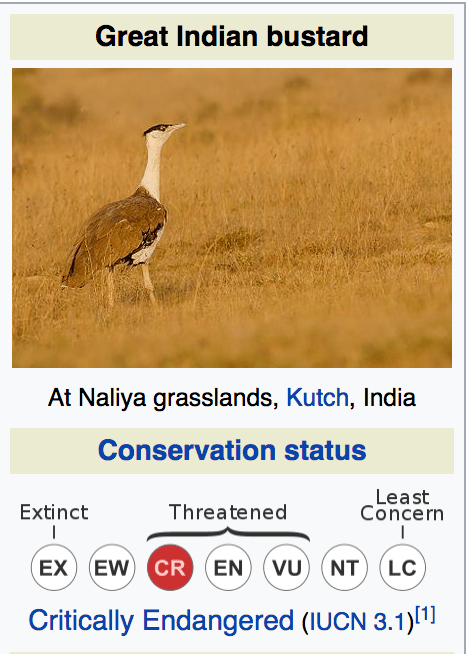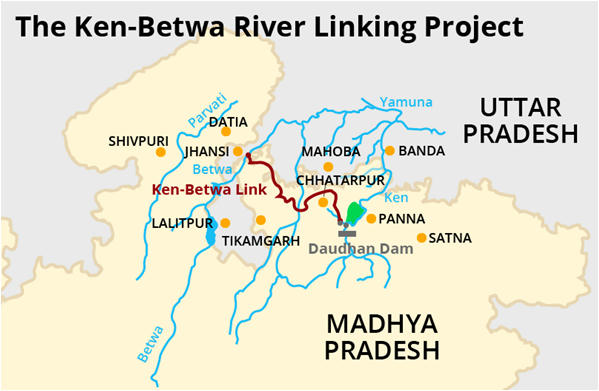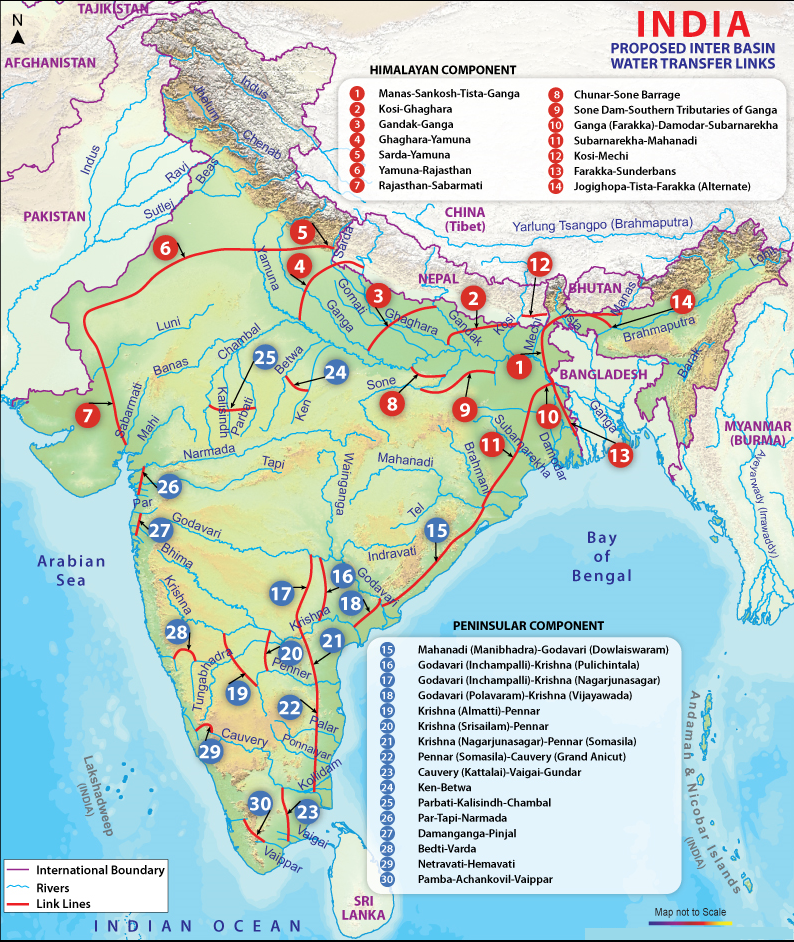CONTENTS
- Ude Desh Ka Aam Naagrik (UDAN)
- National Education Policy 2020 & Bal Bhavans
- Great Indian Bustards
- Ken-Betwa Link Project
Ude Desh Ka Aam Naagrik (UDAN)
Focus: GS III- Indian Economy
Why in News?
Airports Authority of India (AAI), the Implementing Agency, has awarded 948 routes, from which, 405 routes involving 65 airports including 8 heliports and 2 water aerodromes have been operationalized under UDAN as on 09.03.2022.
About Ude Desh Ka Aam Naagrik (UDAN):
Nodal: Ministry of Civil Aviation (MoCA)
- It is an innovative scheme to develop the regional aviation market.
- Objective:
- To create affordable yet economically viable and profitable flights on regional routes so that flying becomes affordable to the common man even in small towns.
- To stimulate regional air connectivity and making air travel affordable to the masses.
- The scheme envisages providing connectivity to un-served and underserved airports of the country through the revival of existing air-strips and airports. The scheme is operational for a period of 10 years.
- UDAN is a market driven ongoing scheme where bidding rounds are conducted periodically for covering more destinations/stations and routes under the scheme.
- Interested airlines assess the demand on particular routes connecting these airports and submit their proposals at the time of bidding.
UDAN 1.0
Under this phase, 5 airlines companies were awarded 128 flight routes to 70 airports (including 36 newly made operational airports)
UDAN 2.0
In 2018, the Ministry of Civil Aviation announced 73 underserved and unserved airports.
For the first time, helipads were also connected under phase 2 of UDAN scheme.
UDAN 3.0
Key Features of UDAN 3 included:
- Inclusion of Tourism Routes under UDAN 3 in coordination with the Ministry of Tourism.
- Inclusion of Seaplanes for connecting Water Aerodromes.
- Bringing in a number of routes in the North-East Region under the ambit of UDAN.
UDAN 4.0:
- The 4th round of UDAN was launched in December 2019 with a special focus on North-Eastern Regions, Hilly States, and Islands.
- The airports that had already been developed by Airports Authority of India (AAI) are given higher priority for the award of VGF (Viability Gap Funding) under the Scheme.
- Under UDAN 4, the operation of helicopter and seaplanes is also been incorporated.
National Education Policy 2020 & Bal Bhavans
Focus: GS II- Education
Why in News?
National Education Policy 2020 paves way for transformational reforms in school and higher education systems in the country.
The salient features of New Education Policy (NEP) 2020 are as follows :-
- New Policy promotes Multilingualism in both schools and HEIs; Indian Institute of Translation and Interpretation to be set up.
- New Policy aims for 100 % GER in school education by 2030.
- New 5+3+3+4 school curriculum with 12 years of schooling and 3 years of Anganwadi/ pre-schooling.
- Emphasis on Foundational Literacy and Numeracy, no hard separation between academic streams, extracurricular, vocational streams in school; Vocational Education to start from Class 6 with Internships.
- Assessment reforms with 360 degree Holistic Progress Card and tracking Student Progress for achieving Learning Outcomes. A National Assessment Centre, PARAKH (Performance Assessment, Review, and Analysis of Knowledge for Holistic Development), to be set-up as a standard-setting body for transforming Assessment.
- Setting-up of State School Standards Authority (SSSA) to establish a minimal set of standards based on basic parameters (namely, safety, security, basic infrastructure, number of teachers across subjects and grades, financial probity, and sound processes of governance), which shall be followed by all schools.
- Teacher education to move into a multi-disciplinary environment and four year B.Ed. integrated to become a minimum degree qualification for school teachers by 2030.
- Achieving 100% youth and Adult literacy.
- GER in higher education to be raised to 50 % by 2035.
- Higher Education curriculum to have Flexibility of Subjects.
- Multiple Entry / Exit, and transfer of credit through an Academic Bank of Credits.
- National Research Foundation to be established to foster a strong research culture.
- Light but Tight Regulation of Higher education, single regulator with four separate verticals for different functions- the Higher Education Commission of India (HECI).
- A stage-wise mechanism for granting graded autonomy to colleges, through a transparent system of graded accreditation, will be established.
- NEP 2020 advocates increased use of technology with equity; National Educational Technology Forum to be created.
- NEP 2020 emphasizes setting up of Gender Inclusion Fund, Special Education Zones for disadvantaged regions and groups.
Bal Bhavans
- NEP 2020, recommends that every State will be encouraged to strengthen existing or establish “Bal Bhavans” where children of all ages can visit once a week (e.g., on weekends) or more often, as a special daytime boarding school, to partake in art-related, career-related, and play-related activities.
- It would be pertinent to mention here that Education is in the Concurrent list of the Constitution of India and setting up of the schools and related institutions are in the jurisdiction of the State and UTs.
- Therefore, it is for the respective State Government to take decision on setting up of Bal Bhavans within its jurisdictional area.
Great Indian Bustards
Focus: GS III- Environment
Why in News?
Recently, Minister of State, Ministry of Environment, Forest & Climate Change provided information about the important steps taken by the Government for protection of Great Indian Bustards in the country including details of captive breeding facilities.
Protection of Great Indian Bustards
- A site for establishment of a Conservation Breeding Centre for the Great Indian Bustard has been identified at Kota District, Rajasthan in consultations with State Forest Departments of Rajasthan and Gujarat, Wildlife Institute of India and international experts, under the project titled ‘Habitat Improvement and Conservation Breeding of Great Indian Bustard-an integrated approach’.
- The Great Indian Bustard is listed in Schedule-I of the Wild Life (Protection) Act, 1972, thereby, according it highest degree of legal protection from hunting.
- Important habitats of Great Indian Bustards are designated as National Parks/Sanctuaries for their better protection.
- The species has been identified for conservation efforts under the component ‘Species Recovery Programme’ of the Centrally Sponsored Scheme (CSS)-Development of Wildlife Habitat.
- Ministry has taken up an initiative on conservation breeding of the Great Indian Bustard in collaboration with Rajasthan, Gujarat and Maharashtra Forest Departments and technical support from Wildlife Institute of India, Dehradun.
- Ministry has also constituted a Task Force for suggesting Eco- friendly measures to mitigate impacts of power transmission lines and other power transmission infrastructures on wildlife including the Great Indian Bustard.
- The Great Indian Bustard has been included in the Appendix I of Convention on Migratory Species (CMS) of the basis of proposal submitted by India.
- As per the studies conducted by Wildlife Institute of India, there are around 150 Great Indian Bustards left across the country which includes about 128 birds in Rajasthan and less than 10 birds each in the States of Gujarat, Maharashtra, Andhra Pradesh and Karnataka.
About the Great Indian Bustard
- The Great Indian Bustard is one of the heaviest flying birds in the world often found associated in the same habitat as blackbuck.
- GIBs are the largest among the four bustard species found in India, the other three being MacQueen’s bustard, lesser florican and the Bengal florican.
- The GIB is Critically Endangered on the IUCN Red List, and comes under the Appendix I of CITES, and Schedule I of the Indian Wildlife (Protection) Act, 1972.
- Threats to the GIB include widespread hunting for sport and food, and activities such as mining, stone quarrying, excess use of pesticides, grassland conversion and power projects along with the expansion of roads and infrastructures such as wind-turbines and power cables.

About the Habitat of Great Indian Bustard
- The Great Indian Bustard’s habitat includes Arid and semi-arid grasslands with scattered short scrub, bushes and low intensity cultivation in flat or gently undulating terrain. It avoids irrigated areas.
- GIBs’ historic range included much of the Indian sub-continent but it has now shrunken to just 10 per cent of it.
- Among the heaviest birds with flight, GIBs prefer grasslands as their habitats. Being terrestrial birds, they spend most of their time on the ground with occasional flights to go from one part of their habitat to the other.
- GIBs are considered the flagship bird species of grassland and hence barometers of the health of grassland ecosystems.
- They feed on insects, lizards, grass seeds etc.
On the brink of extinction
- In 2020, the Central government had told the 13th Conference of Parties to the United Nations Convention on Migratory Species of Wild Animals (CMS) held in Gandhinagar, that the GIB population in India had fallen to just 150.
- Of the 150 birds in 2020, over 120 birds were in Rajasthan, some were in Kutch district of Gujarat and a few in Maharashtra, Karnataka and Andhra Pradesh.
- Pakistan is also believed to host a few GIBs.
- Due to the species’ smaller population size, the International Union for Conservation of Nature (IUCN) has categorised GIBs as critically endangered, thus on the brink of extinction from the wild.
- Scientists of Wildlife Institute of India (WII) have been pointing out overhead power transmission lines as the biggest threat to the GIBs.
Ken-Betwa Link Project
Focus: GS III- Environment
Why in News?
Environmental Clearance and Wildlife Clearance for Ken-Betwa Link Project (KBLP) have been granted by the Expert Appraisal Committee (EAC) and the National Board of Wildlife (NBWL) respctively, of the Ministry of Environment, Forest & Climate Change (MoEF&CC).
Interlinking of Rivers
- In 1858, Arthur Cotton (British general and irrigation Engineer) came up with even more ambitious proposals such as connecting all major rivers of India, and interlinking of canals and rivers. He suggested drought-relief measures for Odisha.
- The National River Linking Project (NRLP) formally known as the National Perspective Plan, envisages the transfer of water from water ‘surplus’ basins where there is flooding, to water ‘deficit’ basins where there is drought/scarcity, through inter-basin water transfer projects.
- The interlinking of river project is a Civil Engineering project, which aims to connect Indian rivers through reservoirs and canals.
- The farmers will not have to depend on the monsoon for cultivation and also the excess or lack of water can be overcome during flood or drought.
- Since the 1980s, the interlinking project has been managed by India’s National Water Development Agency (NWDA) under the Ministry of Water Resources.
- It has been split into three parts as follows:
- A northern Himalayan river interlink component.
- A southern peninsular component.
- An Intra-State river linking component.
As of now, six ILR projects have been under examination of the authorities:
- Ken-Betwa,
- Damanganga- Pinjal,
- Par-Tapi-Narmada,
- Manas-Sankosh-Teesta-Ganga,
- Mahanadi-Godavari and
- Godavari-Cauvery (Grand Anicut)
- With regard to the peninsular rivers, the Centre has chosen to focus on the Godavari-Cauvery link.
What is the Ken-Betwa Link Project?
- The Ken-Betwa Link Project is the first project under the National Perspective Plan for interlinking of rivers.
- KBRIL is a river-interlinking project that aims to transfer surplus water from the Ken river in Madhya Pradesh to Betwa in Uttar Pradesh to irrigate the drought-prone Bundelkhand region.
- Both Ken and Betwa are the tributaries of the Yamuna.
- The Ken-Betwa Link Canal will be 221 km long, including a 2-km long tunnel.


A Special Purpose Vehicle (SPV) for the project
- According to the statement, a Special Purpose Vehicle (SPV) called Ken-Betwa Link Project Authority (KBLPA) will be set up to implement the project.
- In fact, the Centre has set in motion the process of creation of National Interlinking of Rivers Authority (NIRA), an independent autonomous body for planning, investigation, financing and implementation of the interlinking of river (ILR) projects in the country.
- The NIRA will have powers to set up SPV for individual link projects.
Which regions will benefit from the Ken-Betwa Link Project?
- The project lies in Bundelkhand, a drought-prone region, which spreads across 13 districts of Uttar Pradesh and Madhya Pradesh.
- According to the Jal Shakti Ministry, the project will be of immense benefit to the water-starved region, especially the districts of Panna, Tikamgarh, Chhatarpur, Sagar, Damoh, Datia, Vidisha, Shivpuri and Raisen of Madhya Pradesh, and Banda, Mahoba, Jhansi and Lalitpur of Uttar Pradesh.
- “It will pave the way for more interlinking of river projects to ensure that scarcity of water does not become an inhibitor for development in the country,” the Ministry said in a statement.



